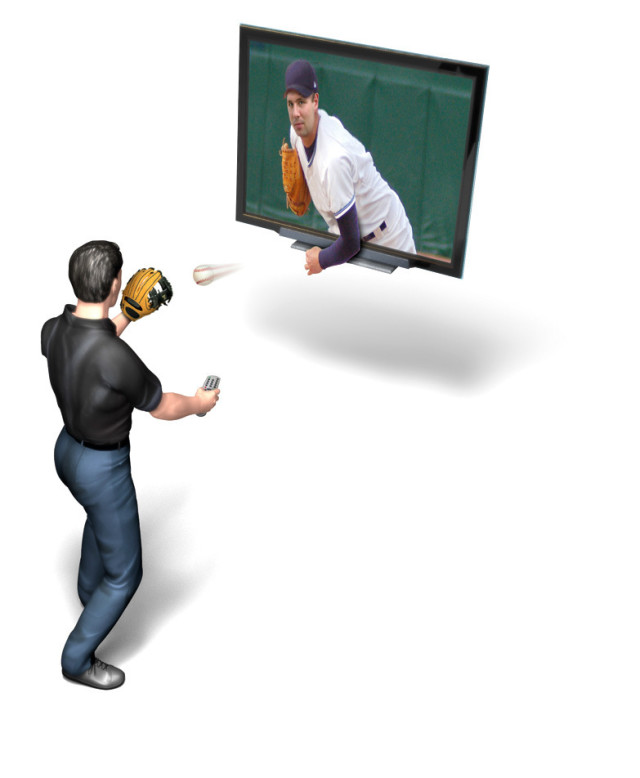Outside the Box

ON THE SECOND episode of last summer’s hit reality cooking contest, Top Chef: Miami, a dozen or so culinary wunderkinder must each prepare an entrée for a high-end feast. By the show’s end, predictably, one will be eliminated.
For the most part, this third installment of Bravo’s “Top Chef” series followed the standard reality-show formula—except for one not-so-discreet element located at the bottom of some satellite subscribers’ screens. The show was sponsored by Bertolli, read the pop-up message; it then instructed viewers to press a special button on their Dish Network remote control to vote for the chef they think should “pack up their knives and go home.” Once inside the advertiser’s universe, viewers could opt to try out a few recipes using Bertolli olive oil or even answer trivia questions about the show’s content.
Allowing people to interact directly with products is fast becoming the new face of television advertising. Up against declining audiences and the increasing popularity of digital video recorders, such as TiVo, which allow users to fast-forward through commercials, advertisers and television execs alike are scrambling to find a new model for doing business.
This desperation has led many to Portland-based Ensequence, an eight-year-old company of 100 software engineers, programmers and graphic designers, who toil away in the U.S. Bank building. The company’s core product, a suite of proprietary software called On-Q, allows its clients—advertisers like Nike and television networks like Bravo—to engage viewers in a kind of conversation, which, notes Ensequence CEO Dalen Harrison, “has a huge impact on their brand awareness.”
Ensequence is one of the few U.S. companies that have engineered software for the “interactive television,” or iTV, market, as this new infotainment approach is broadly called. As such, venture capitalists have been eager to invest: In 2004, they poured $22 million into the company. Three years later, they handed over a whopping $40 million.
“What Ensequence is doing embodies the future of cross-media consumption,” says Andrew Hampp, who has written about iTV for AdAge magazine.
The company’s projects have run the media gamut. In addition to creating software that allowed viewers to interact with Bertolli products in 2007, the company created an On-Q application for Major League Baseball that lets fans watch up to six baseball games at once, and another that invited viewers of a Nike commercial to check out behind-the-scenes training habits of San Diego Chargers running back LaDainian Tomlinson. During Spike TV’s “Video Game Awards” last December, Ensequence’s software let people watch the show while simultaneously hunting for secret “Easter eggs” that provided the cheat codes needed to win a number of popular video games.
Interactive TV is already firmly ensconced in Europe and Asia—part of the reason that trend-watchers are sure it will take off here. In Hong Kong, some 60 percent of households watch television via the internet, a delivery method that allows iTV software to be employed. By contrast, out of the 111 million American households that have television, just 20 million of them have access to iTV-based technologies through web and satellite services like DirecTV and Dish Network. “The fact that Ensequence’s technology only works online and for satellite subscribers, and not for cable, is fairly limiting,” says Hampp.
Which may be why Ensequence’s first major ad project—creating the interactive interface for HP’s Photosmart digital camera and printer in 2005—rolled out in the United Kingdom, where that country’s BSkyB satellite provider generates $800 million a year in iTV-based ad revenue.
“Viewers’ brand awareness went up 70 percent,” says Ensequence vice president of marketing Michele Bogdan, who also notes that 25 percent of viewers chose to interact with the ads for an average of three minutes each: “That is just unheard of. We know it works. It’s just a matter of reaching the widest audience we can in America.”
On that front, there is ample room for growth. Which means that iTV could become an even bigger windfall for Ensequence—or, in a worst-case scenario, get voted off the tube entirely.




